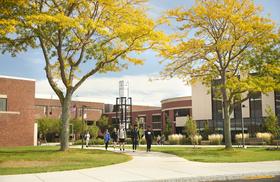It would seem that in an economic environment where the unemployment rate is in the double digits, employers would have plenty of qualified prospects. However, employers are not finding applicants with the education and training necessary to move into many positions without extensive on-the-job training – something few employers can or want to afford at this time. The result is a working class that can't get jobs because they do not have the necessary preparation that allows them to transition into those jobs with ease. The really surprising part is that we are talking about college graduates that are ill-equipped for the rigors of the professional world, according to a new study.
Training and the Economy
This news comes from a recent study conducted by Corporate Voices for Working Families and Civic Enterprises titled, "Across the Great Divide." The study takes a closer look at the relationship between the education students are getting in colleges and the training employers are looking for today from college graduates.
The introduction to the study published on the Corporate Voices website states, "Many of those looking for work do not have the skills required by companies looking to hire – resulting in high unemployment even as businesses desperately seek new talent. If our nation fails to bridge this gap, we will risk our ability to compete effectively on the global stage."
Taylor Reveley, president of The College of William and Mary, agrees. Reveley told Business News Daily, "It is a significant issue if people are not being trained for the jobs that exist and, perhaps more to the point, the jobs that are evolving, because then our economy and nation are in real trouble."
A Definition of "College"
While the introduction sounds somewhat ominous, the good news is that the study also presents solutions that can turn this trend around. First, it is important to note that both professional and education leaders agree that a post-secondary degree or certification is becoming more vital to landing a good job in the 21st century. In fact, businesses and colleges across the country are partnering together to reduce these training discrepancies and equip college students with practical skills that they will truly be able to use when they get out of school.
The response to the current disparity must begin with a definition of what "college" looks like. According to a press release regarding the study on PR Newswire, the first key misperception that must be overcome to close the divide between the academic and professional world is to recognize that college is not limited to four-year bachelor's degrees any longer. Short-term degrees and credentials offer diversity and hands-on training that can be very practical for the professional world, and community colleges are perfectly equipped for this type of training.
Stephen M. Wing, president of Corporate Voices for Working Families, said in the press release, "The focus on college too often excludes the demand for those who hold two-year associate degrees and trade-specific credentials. Despite the conventional wisdom that bachelor's degrees are critical to success, the job market of the future will demand a vast new supply of talented graduates of a diverse range of postsecondary programs, including those that are two years or less. Not recognizing the value of these degrees is hindering our efforts to meet the needs of employers."
The study found that 98 percent of business leaders believe the term "college" means a four-year degree. While changing that perception will not be easy, it is absolutely necessary if employers are going to find the employees with the specific skills they need.
Enrollment vs. Completion
The other factor that is impacting the discrepancy between people looking for jobs and those who have the skills for hiring is the current focus on college enrollment, rather than college completion. The study suggests that in order to produce the eight million graduates that President Obama has challenged this country to, colleges will need to focus less on enrollment and more on completion of degree programs. Incentives for completion might include:
- Partial loan forgiveness for students that graduate
- Performance funding for postsecondary institutions that focus on preparing students for workforce development
- Tax incentives for businesses to encourage them to participate in "Earn and Learn" programs
The study also asserts that in order to measure the level of completion success, effective methods must be implemented to accurately track data.
In addition, making it easier for students to transfer to a four-year college after completing a two-year degree will encourage students who are cash-strapped to pursue their degree through different institutions. Currently, many credits earned in community colleges do not transfer easily to four-year programs, discouraging students and keeping them from completing the education they began.
More than half the business leaders surveyed in this study said that it was difficult to get non-managerial employees with the necessary skills, training and education they needed. The gap was even greater for smaller companies of less than 250 employees. These business owners were responsible for more than half of all the new jobs in 2007, so their input into the proper training and education for the up and coming workforce is significant indeed.
By the same token, as many as three in four business leaders agreed that increasing post-secondary education completion will have a positive effect on the country's economy overall. They also recognize that this factor will positively impact their individual companies, as well as their ability to hire and retrain employees with the necessary skills and knowledge.















